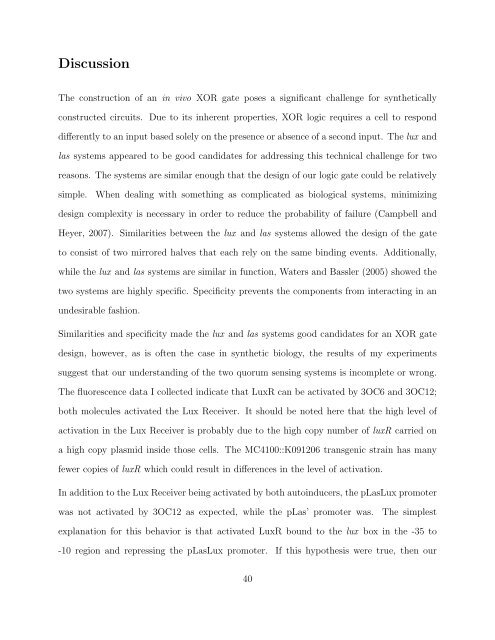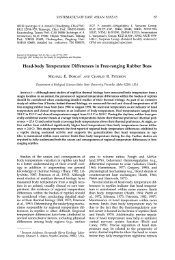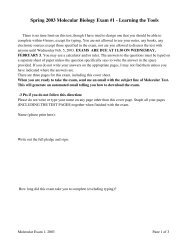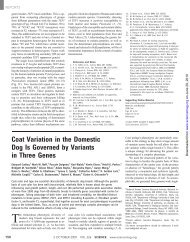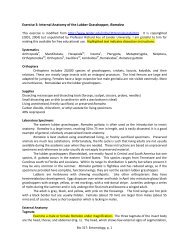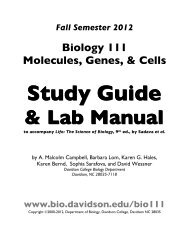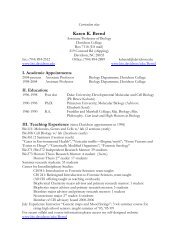Davidson College Department of Biology Honors Thesis Title ...
Davidson College Department of Biology Honors Thesis Title ...
Davidson College Department of Biology Honors Thesis Title ...
You also want an ePaper? Increase the reach of your titles
YUMPU automatically turns print PDFs into web optimized ePapers that Google loves.
Discussion<br />
The construction <strong>of</strong> an in vivo XOR gate poses a significant challenge for synthetically<br />
constructed circuits. Due to its inherent properties, XOR logic requires a cell to respond<br />
differently to an input based solely on the presence or absence <strong>of</strong> a second input. The lux and<br />
las systems appeared to be good candidates for addressing this technical challenge for two<br />
reasons. The systems are similar enough that the design <strong>of</strong> our logic gate could be relatively<br />
simple. When dealing with something as complicated as biological systems, minimizing<br />
design complexity is necessary in order to reduce the probability <strong>of</strong> failure (Campbell and<br />
Heyer, 2007). Similarities between the lux and las systems allowed the design <strong>of</strong> the gate<br />
to consist <strong>of</strong> two mirrored halves that each rely on the same binding events. Additionally,<br />
while the lux and las systems are similar in function, Waters and Bassler (2005) showed the<br />
two systems are highly specific. Specificity prevents the components from interacting in an<br />
undesirable fashion.<br />
Similarities and specificity made the lux and las systems good candidates for an XOR gate<br />
design, however, as is <strong>of</strong>ten the case in synthetic biology, the results <strong>of</strong> my experiments<br />
suggest that our understanding <strong>of</strong> the two quorum sensing systems is incomplete or wrong.<br />
The fluorescence data I collected indicate that LuxR can be activated by 3OC6 and 3OC12;<br />
both molecules activated the Lux Receiver. It should be noted here that the high level <strong>of</strong><br />
activation in the Lux Receiver is probably due to the high copy number <strong>of</strong> luxR carried on<br />
a high copy plasmid inside those cells. The MC4100::K091206 transgenic strain has many<br />
fewer copies <strong>of</strong> luxR which could result in differences in the level <strong>of</strong> activation.<br />
In addition to the Lux Receiver being activated by both autoinducers, the pLasLux promoter<br />
was not activated by 3OC12 as expected, while the pLas’ promoter was. The simplest<br />
explanation for this behavior is that activated LuxR bound to the lux box in the -35 to<br />
-10 region and repressing the pLasLux promoter. If this hypothesis were true, then our<br />
40


